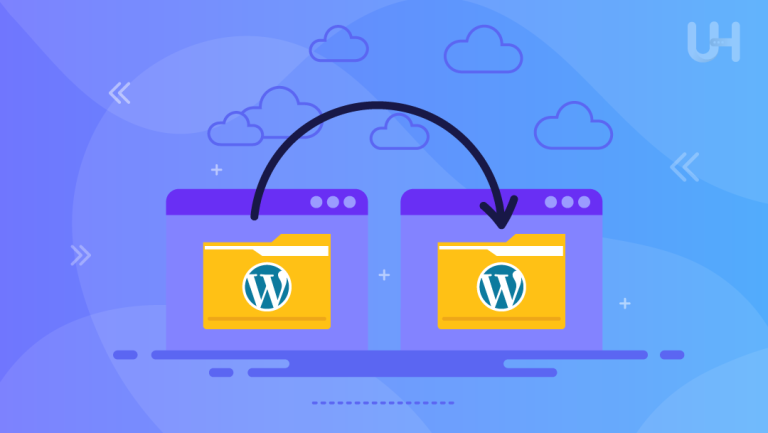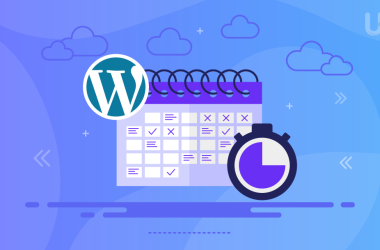What is website migration? In a nutshell, it’s somewhat similar to physically moving your business to a new location but in the digital landscape. It can mean moving your site to a completely different location, such as when you’re changing your domain, hosting, or platform. Also, it could mean a less notable shift, for example, switching from an HTTP URL to HTTPS.
In any case, whether it’s a domain migration or any other type, it’s a significant change to your site, which can influence your visibility in SERPs and SEO. Hence, it’s pivotal that you do it right SEO-wise.
Although it may sound like a complicated and challenging matter, it really doesn’t have to be like that! In this guide, we will share with you a comprehensive SEO migration plan that should set you on the right track!
Pre-Migration Planning
Before shaping your website migration strategy, you need to do some preliminary planning:
- Define Objectives – Shape a well-defined understanding of why you’re migrating and which goals you want to achieve in the end. Namely, from the optimization perspective, your goals might be to retain and grow traffic, improve domain trust, etc.
- Conduct an SEO Audit – Perform a thorough analysis of your site, including an on-page, off-page, and technical SEO audit, to see which point your search engine optimization is at currently. You can automate and fine-tune this process with the help of popular SEO tools, for example, Google Search Console. If you don’t have a specific tool at hand yet, you can discover top alternatives to SEO software on unbiased review sites like Top 10. Such sites will give you a comprehensive outlook on popular tools to help you choose the one that works for you.
- Backup Current Site – Create a copy of your site to have a Plan B if anything goes wrong during migration – it will let you restore it with no stress. You can do a backup manually by downloading and exporting website files, or you can use your hosting provider’s or third-party backup solutions.
- Benchmark Metrics – Based on the audit data, create clear SEO benchmarks that you want to retain and/or achieve after relocating your site. For example, some SEO metrics you may want to benchmark include organic website traffic, keyword and SEO rankings, page speed, etc.
Preparing for Migration
After pre-process planning, take the following preparatory steps to create the right settings for your SEO migration plan:
- Crawl the Existing Site – Pick a web crawling tool to crawl your website. This will give you a complete inventory of content and URLs that you currently have, which can then be used for redirect map creation, content prioritization, and mistake detection.
- Create a URL Mapping Plan – Analyze your URLs and content inventory and plan how you will assign new URLs to existing and new pages for optimal structure and navigation.
- Update Internal Links – Analyze your current network of internal links and update links with new URLs to prevent errors.
- On-Page SEO Elements – Review your on-page SEO elements, such as keywords, meta tags and descriptions, title tags, images, headings, and so on, and optimize or update them according to your website migration tactic.
Implementing the Migration
Once all preparatory stages are handled, here’s a complete website migration checklist to implement your plan:
Set Up 301 Redirects
Reconcile your old and new pages and set up 301 redirects between relevant URLs to ensure that your users get to the right page and allow search bots to find and index your pages effectively. To make this process more structured and guided, create a detailed page redirect map. It will help you ensure that your old and new pages are matched and configured correctly.
Test Redirects
After attributing new redirect codes to your old pages via your CMS, you need to test if they work properly. Wait a few moments for changes to apply, and then try visiting your original URLs to see if you will be taken to a new location.
Update Robots.txt and XML Sitemaps
After relocating your pages, ensure they are accessible (or restricted) for indexing by updating your old robots.txt files. Next, you need to update your XML sitemap with new URLs featured in it. This will enable search engine bots to know which pages you want them to scan and index.
Maintain Site Structure
Sometimes, you might need to update the structure of your website for the sake of SEO and user experience. However, if your site used to work well before, you will likely want to maintain the old structure. By sticking to the same structure, you should be able to maintain a positive user experience, help search engines understand your pages’ relationships well, and also keep your site more habitual for old users.
Post-Migration Actions
After you successfully upgrade your website, there are a few additional post-migration activities that you can do to retain your SEO rankings:
- Keep a close eye on your website traffic and rankings. You can use reputable optimization tools to create in-depth SEO rankings reports, see how migration affected your performance, and make relevant improvements.
- Check for 404 errors and remove or replace all broken links.
- Go to the Sitemaps report section in Search Console, select relevant sitemap(s), and click the resubmit button to notify Google about the major changes you’ve made and let it crawl and index your new pages efficiently.
- Based on your existing backlink profile, reach out to webmasters and site owners to ask them to update your links to new URLs. This will help you retain your backlinks.
Communication and Coordination
Clear and timely communication lies at the core of every successful website migration strategy, as it helps eliminate misunderstandings, human errors, and other unpleasant events that may get in your way.
If you want to approach the communication aspect wisely, you need to take it through three mediums:
- Stakeholders – Communicate your plan and every team member’s role in the process to ensure that everyone is prepared well and knows what they are expected to do.
- Search Engines – Tell Google about your changes by transferring your old search results to the new site address to prevent SEO rankings loss. Do this via the Change of Address tool in Google Search Console.
- Users – To make the transition smooth, give your users the word out beforehand. Use social media, your blog, and newsletters to notify loyal users about what’s coming, for example, by announcing to them a new domain.
Continuous Monitoring and Optimization
After you implement all stages of your SEO website migration, you need to set up a continuous results monitoring and improvement process. Tracking your results is a must for detecting weak spots in your site’s performance and finding areas for improving your search engine optimization.
Here is a brief checklist that should assist you with continuous monitoring and optimization:
- Regular Performance Checks – Set up a trusted analytical tool, such as Google Analytics, and tweak the metrics and administrative features to your preferences. Then, leverage the tool of your choice to regularly track the performance indicators of your site, such as traffic, conversions, click-through rate, engagement time, etc.
- Content Quality Audit – Regular deep content audits can give you valuable insights into which types of content drive traffic, which engage users most, and which don’t work for you. This information can help you achieve your highest website traffic and continue growing it in the long run. Measure the quality of your content using reliable audit tools.
- Technical SEO Audit – Technical SEO has a massive impact on your SEO rankings, as well as customer experience and loyalty because if your site works badly technically, it will be seen as trusted neither by search engines nor by customers and prospects. To make the most out of your upgraded site, find a cutting-edge technical SEO audit tool to detect any errors and fix them for optimal performance.
- Ongoing Optimization – Don’t stop your work after the migration. Create an ongoing optimization plan that focuses on your primary SEO performance metrics and continue optimizing your pages and content for maximum rankings.
Conclusion
Making any major changes to your site can be rather time-consuming and tricky SEO-wise. But not with the detailed website migration checklist that you now have!
Use this guide to prepare for and implement website migration effectively, while retaining your crucial SEO performance metrics and rankings.
Ready to supercharge your website’s performance during migration? Invest in a top-tier SEO VPS for optimal speed, reliability, and search engine rankings. Visit Ultahost to purchase your SEO VPS today and ensure a smooth, successful migration. Don’t leave your site’s success to chance!









